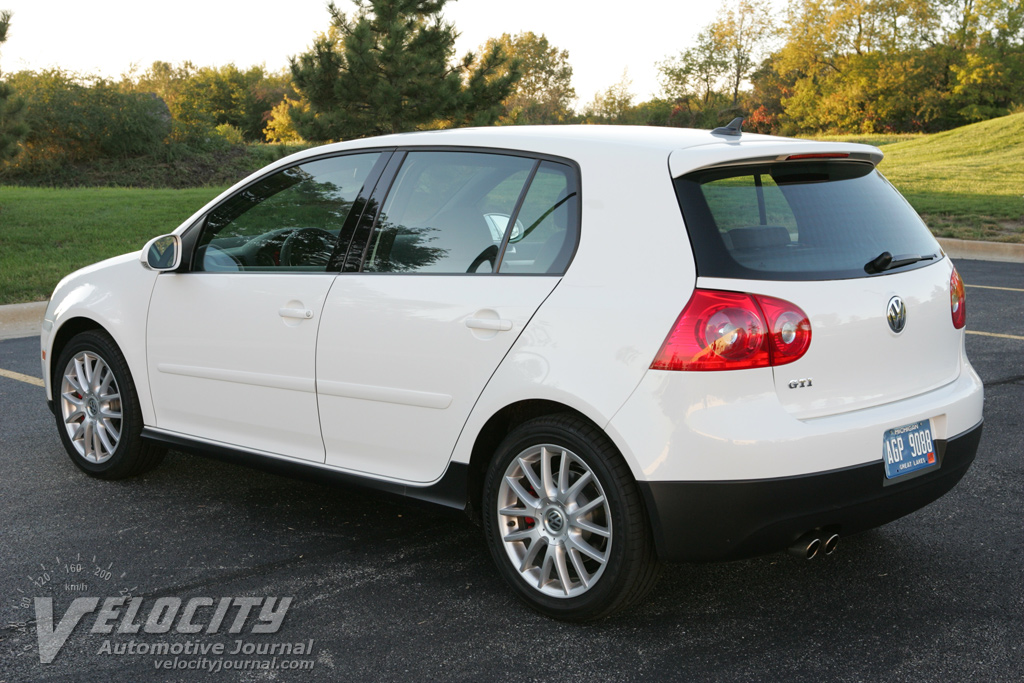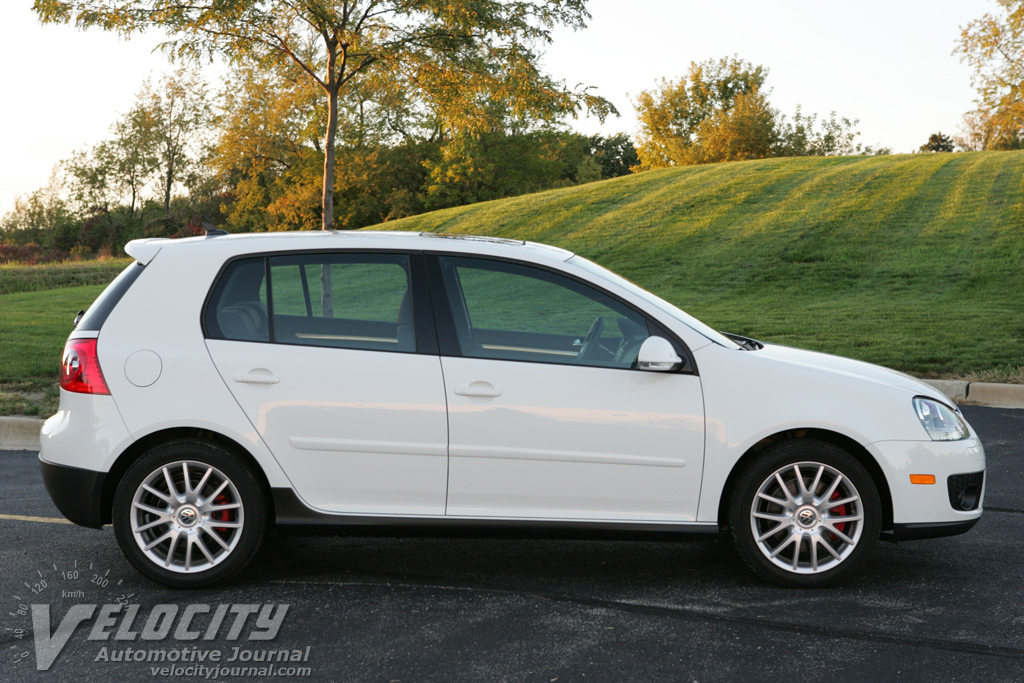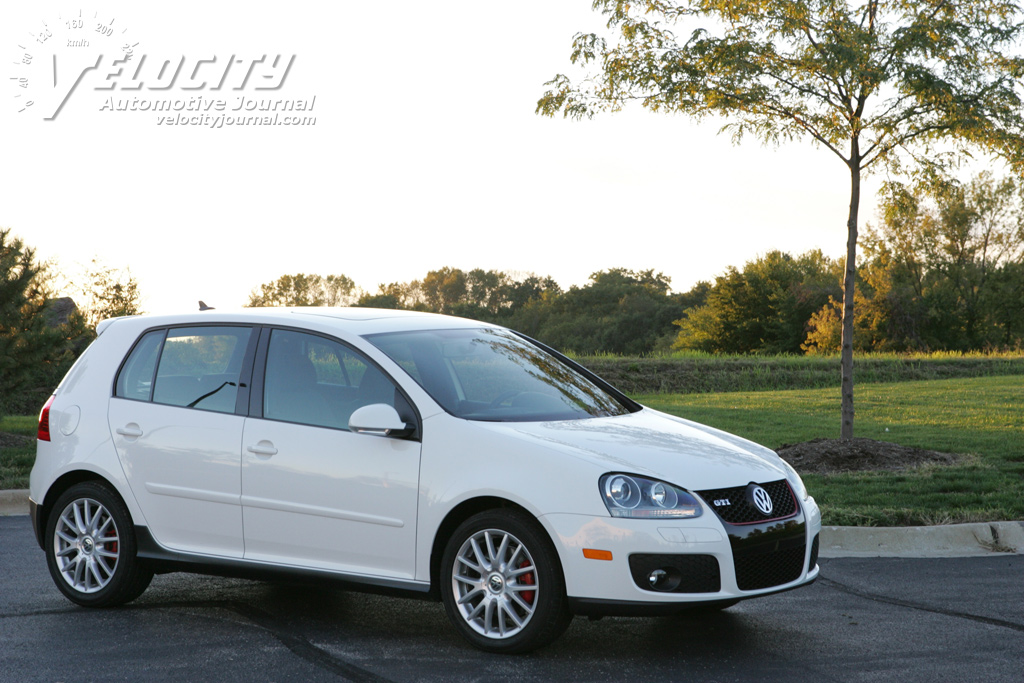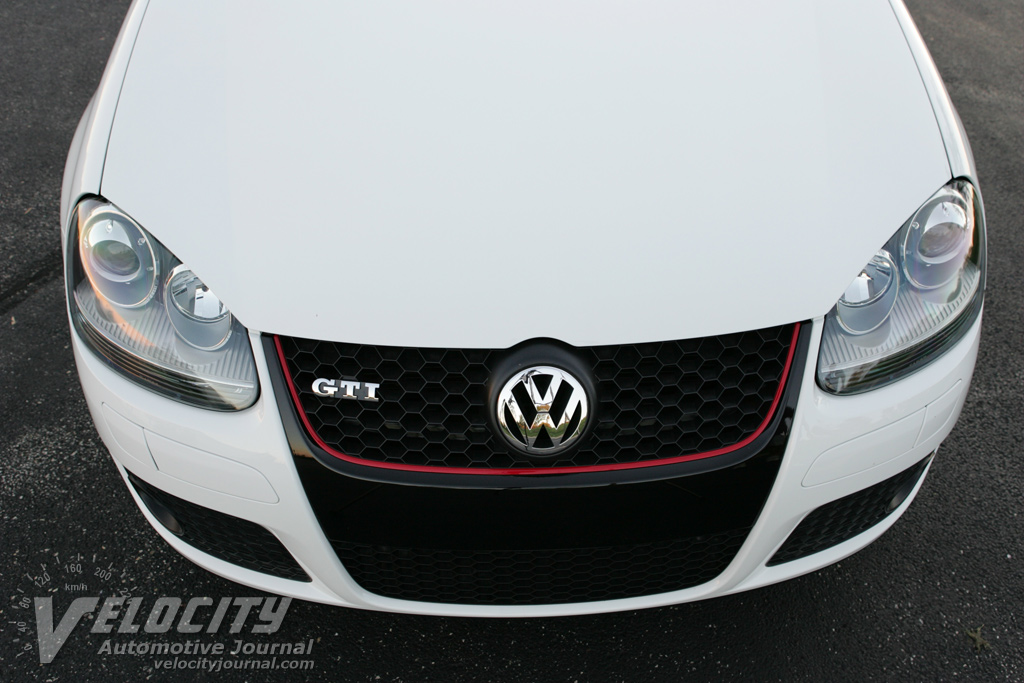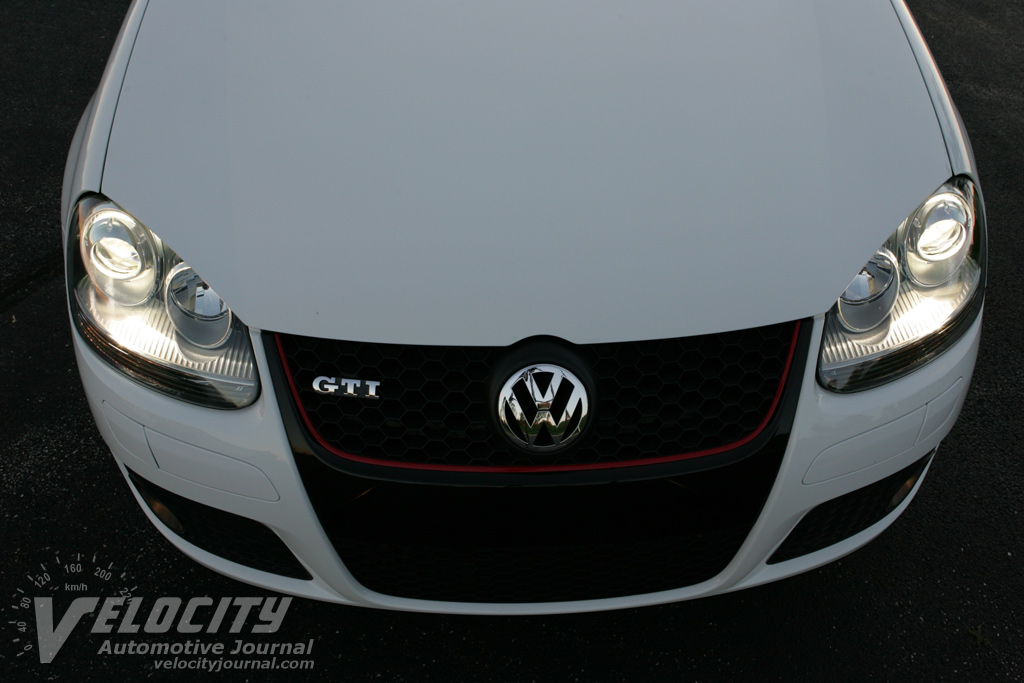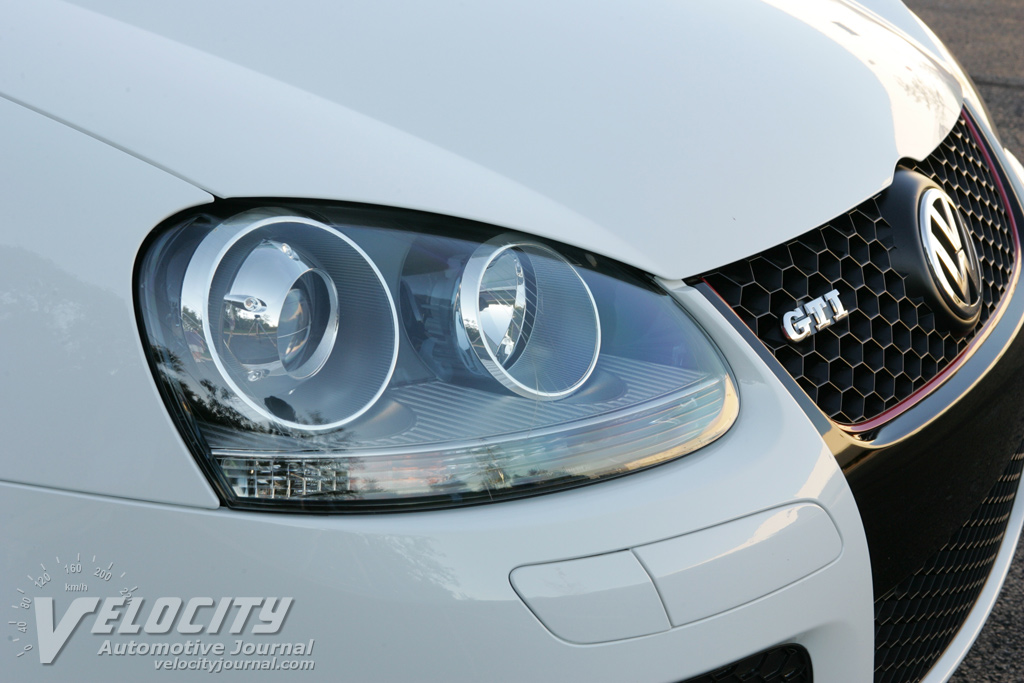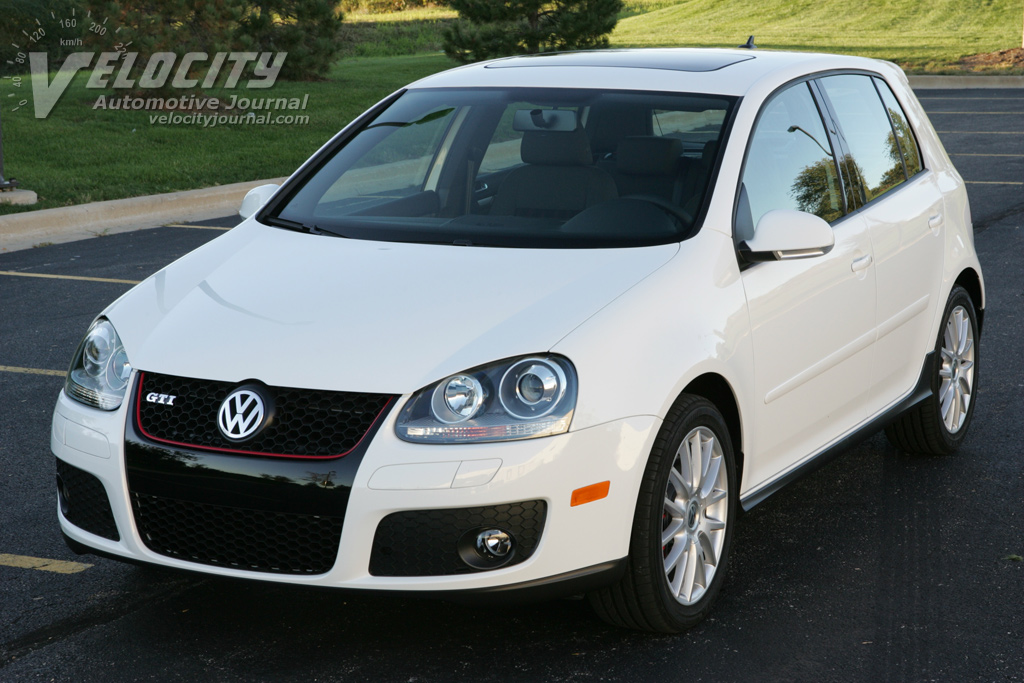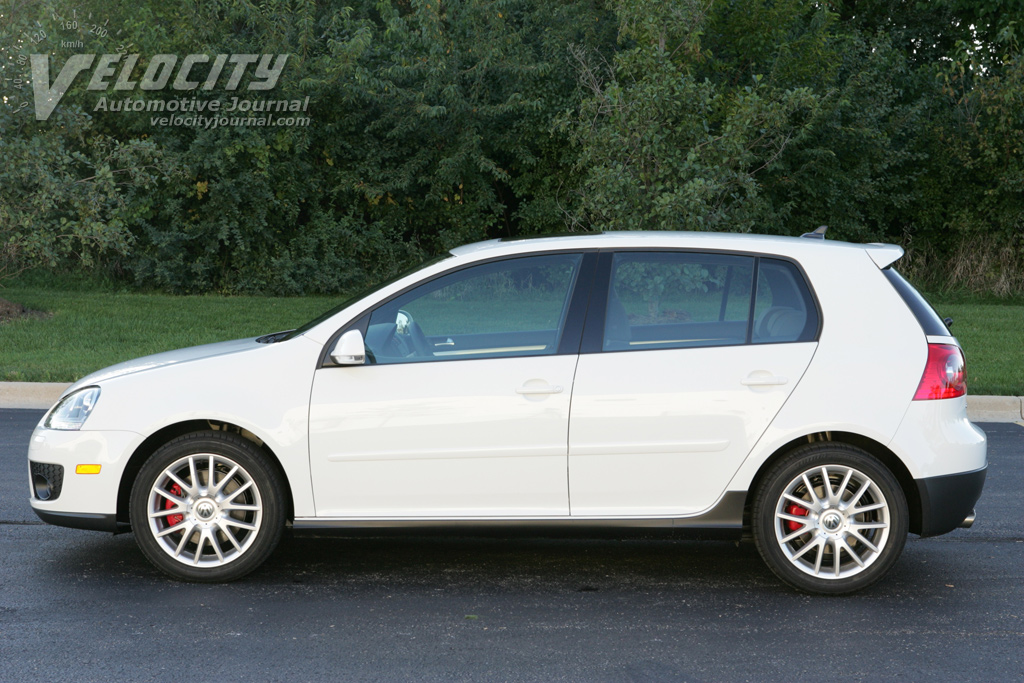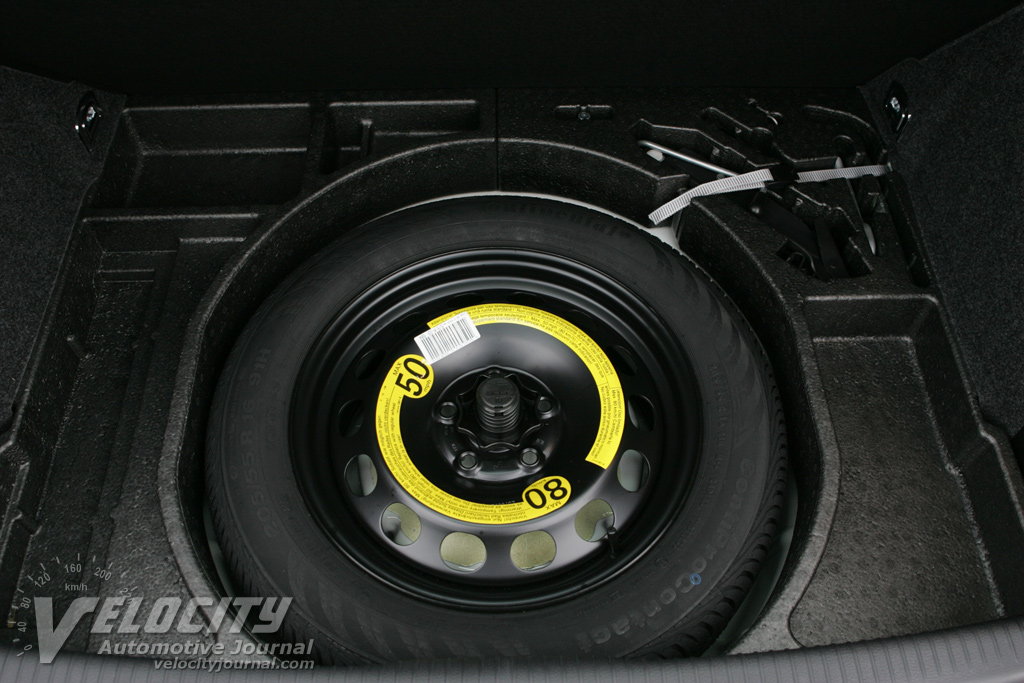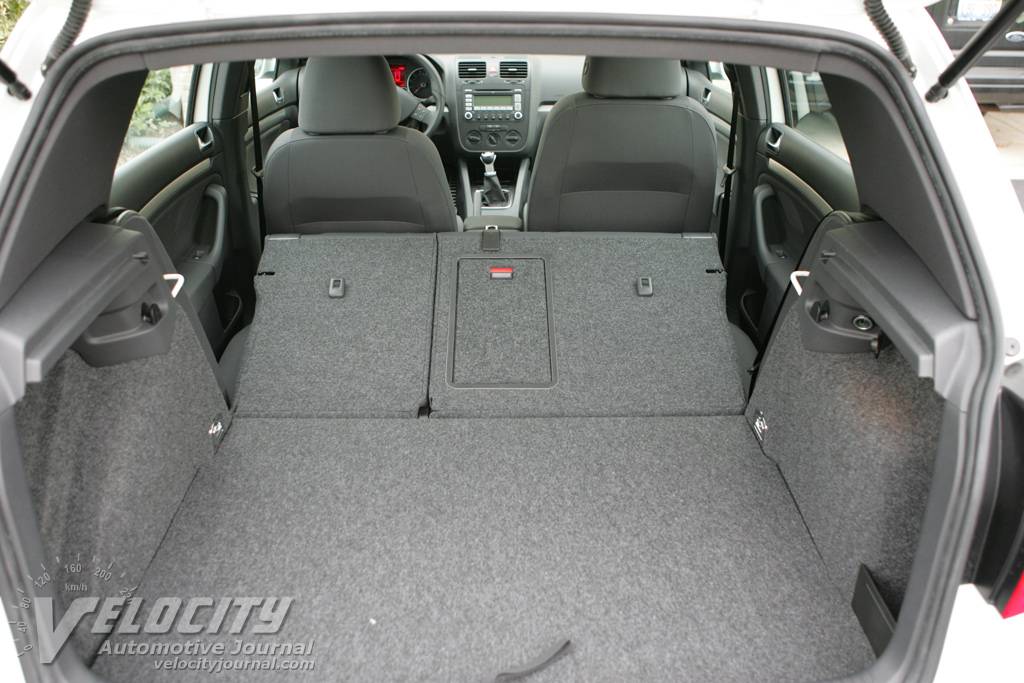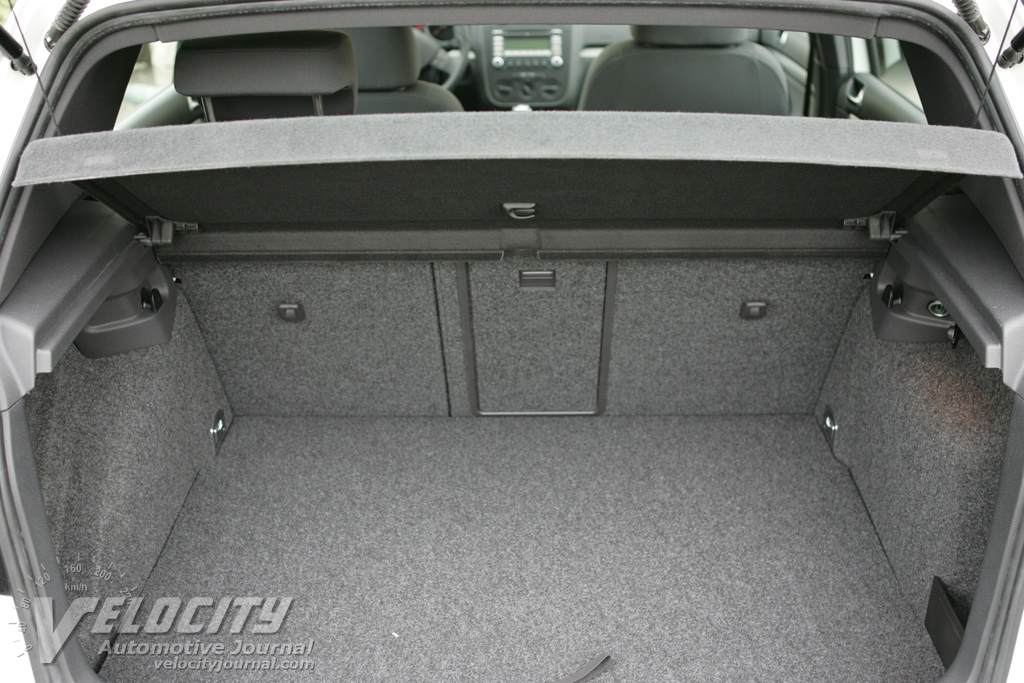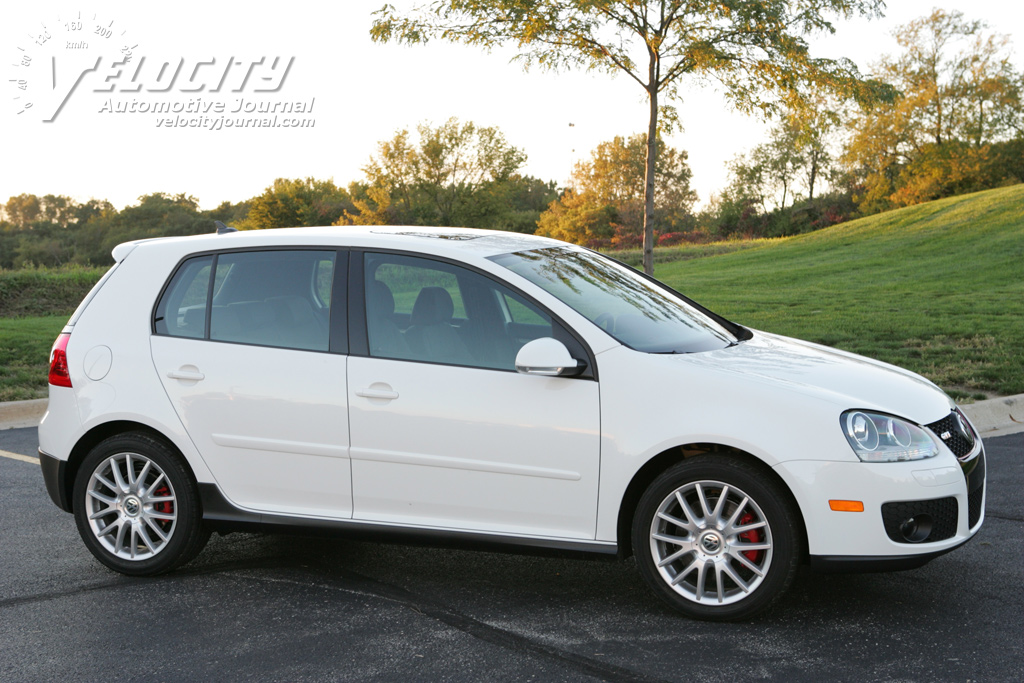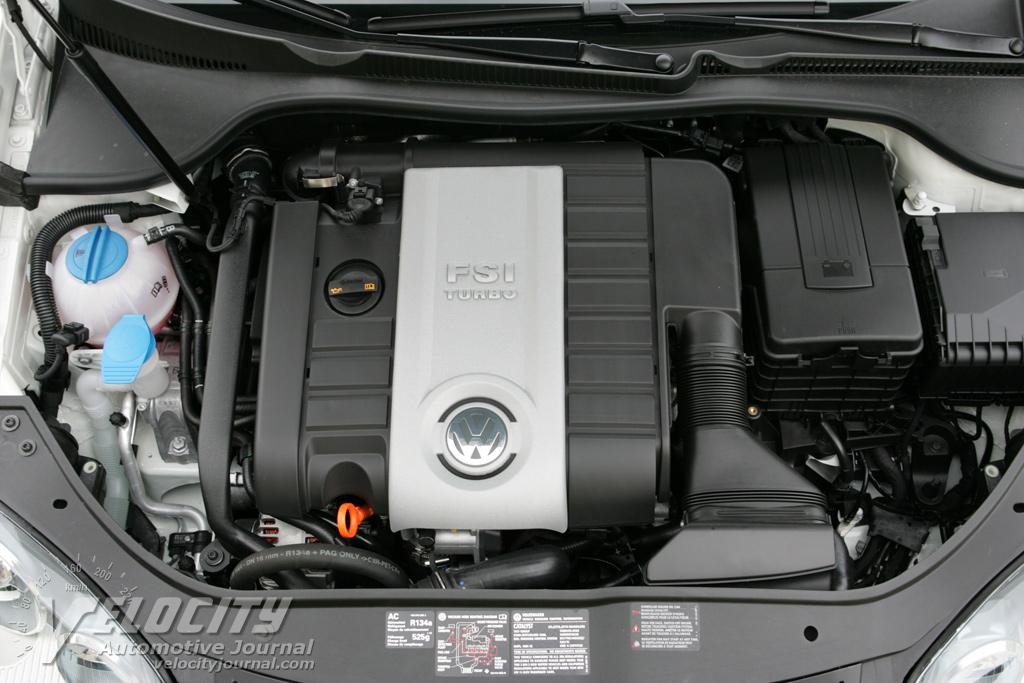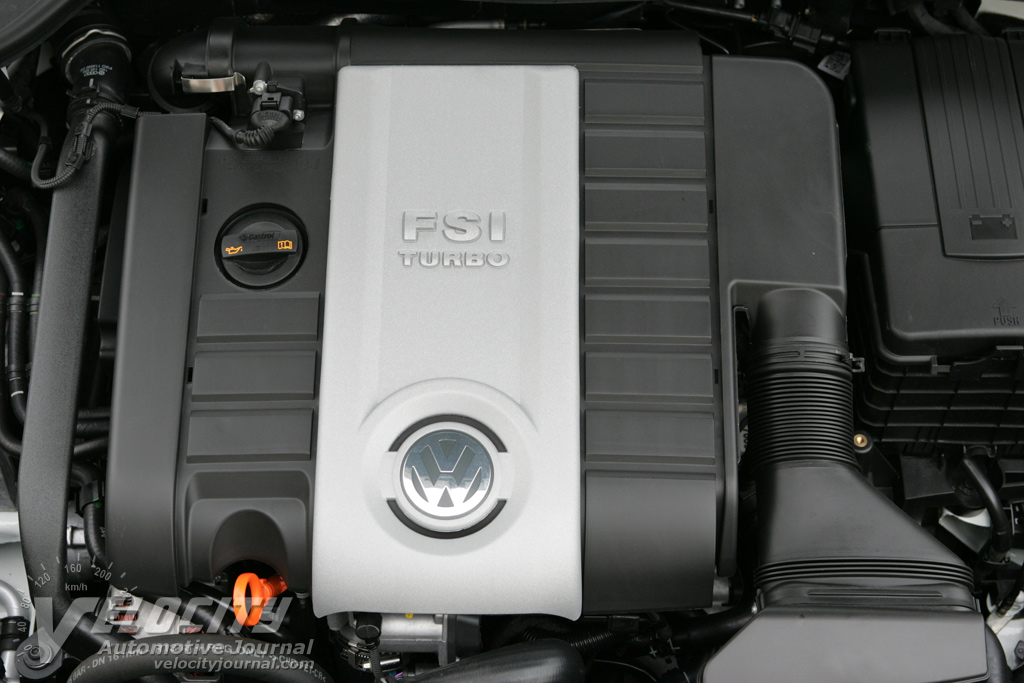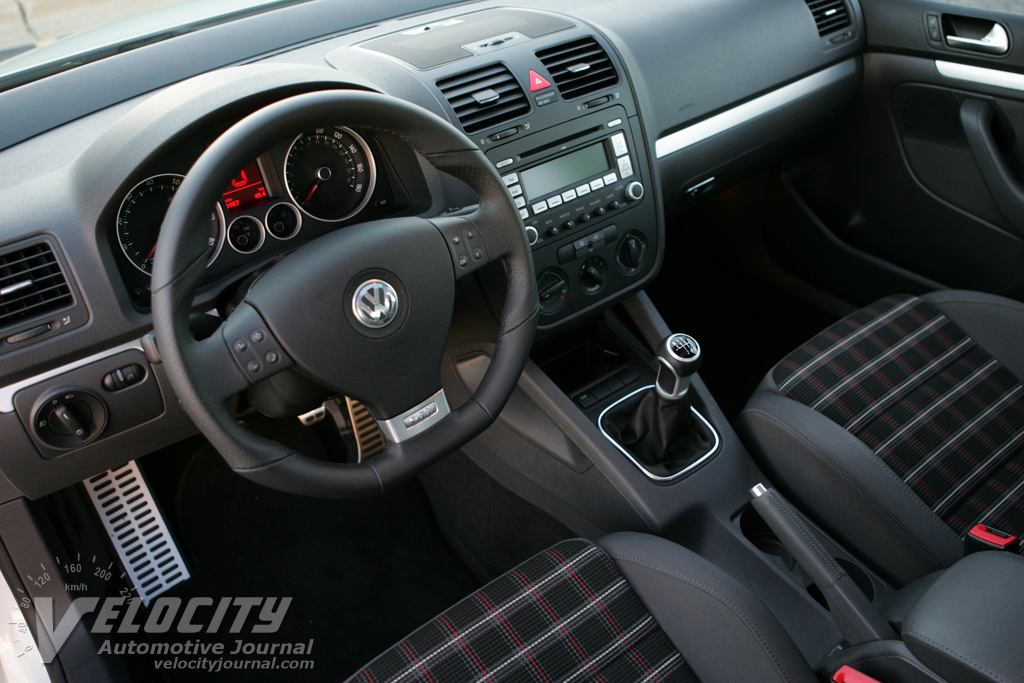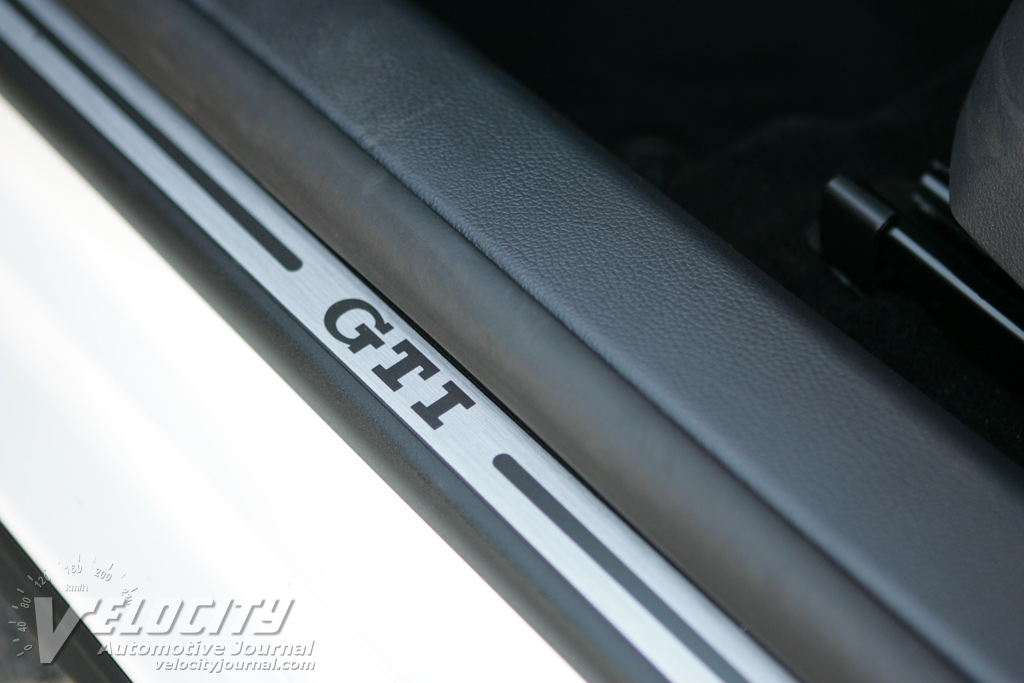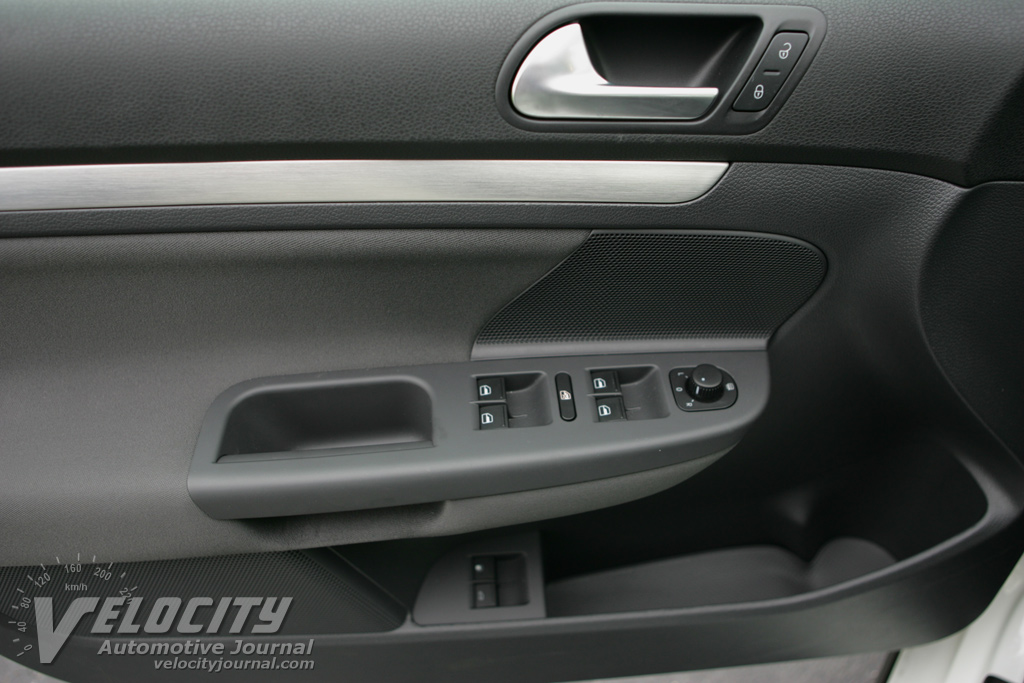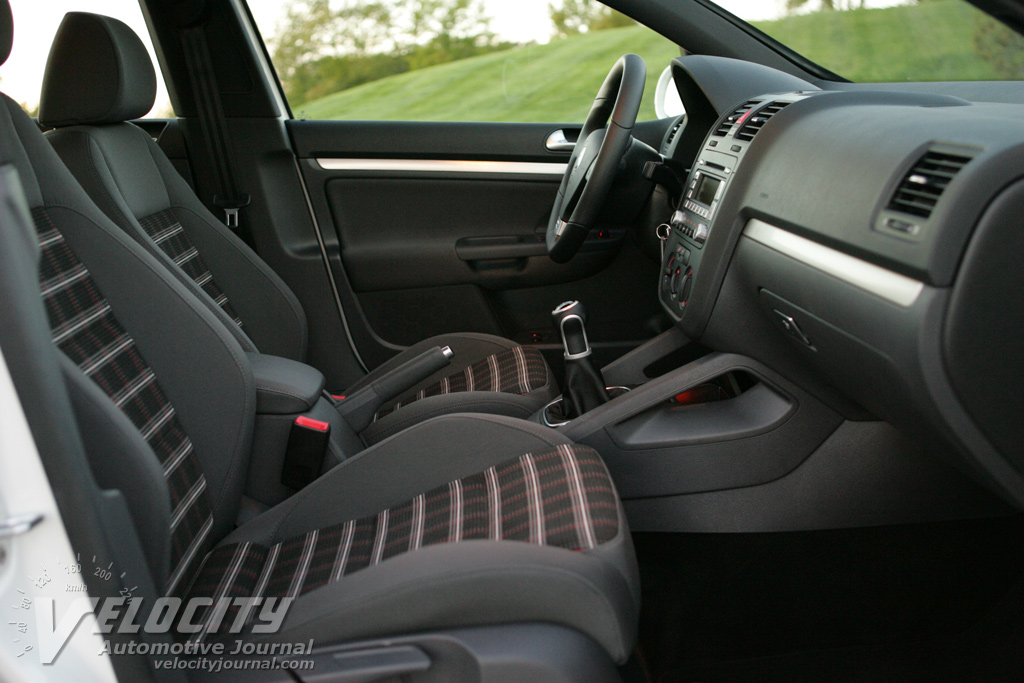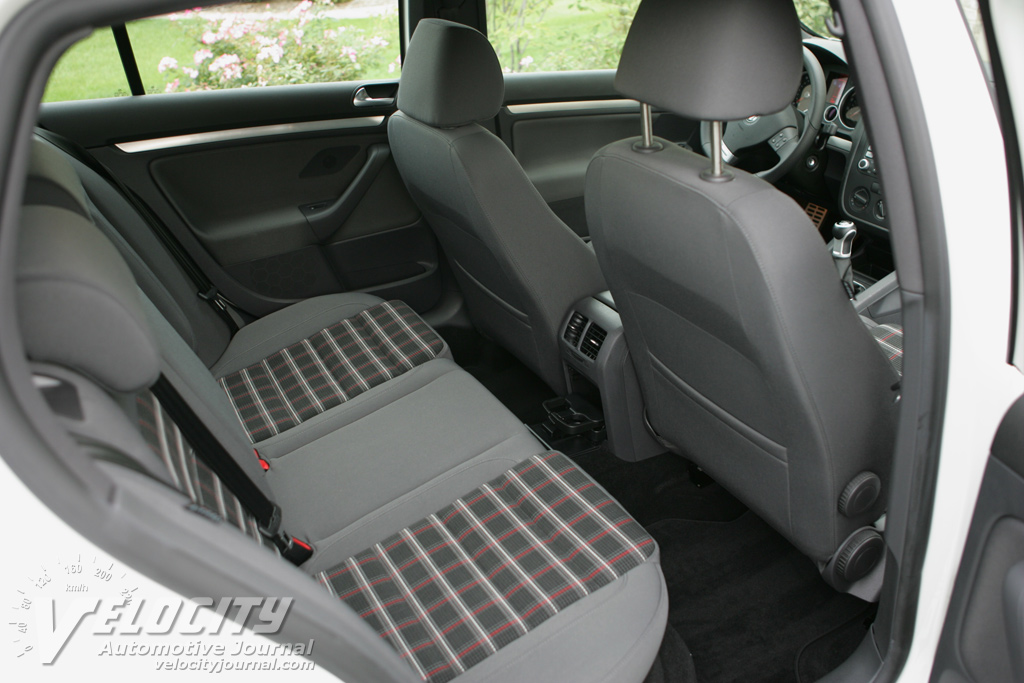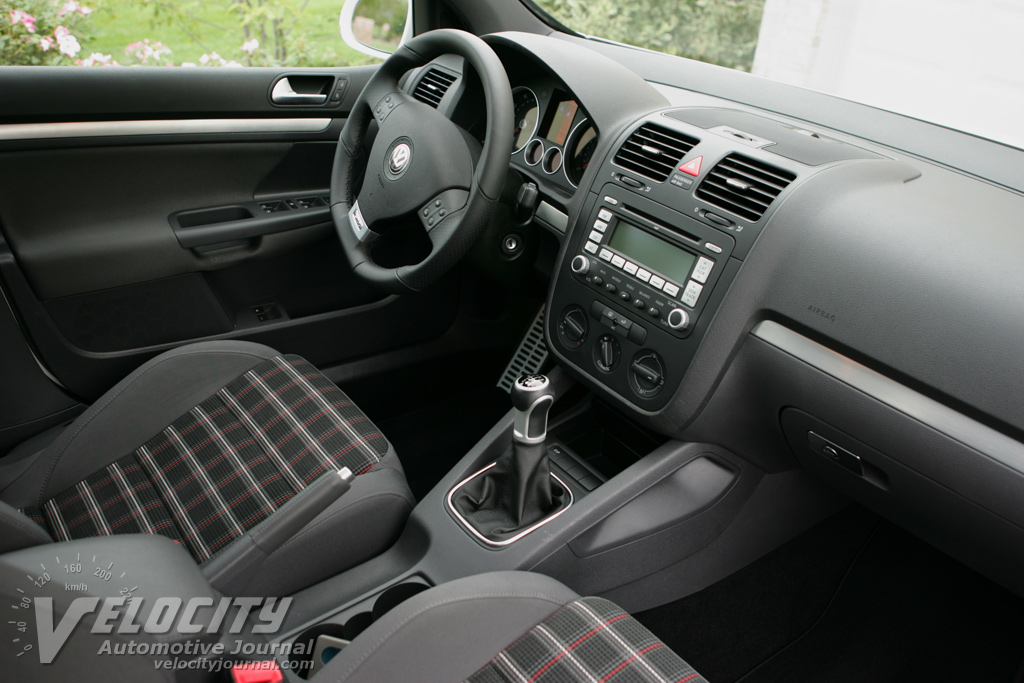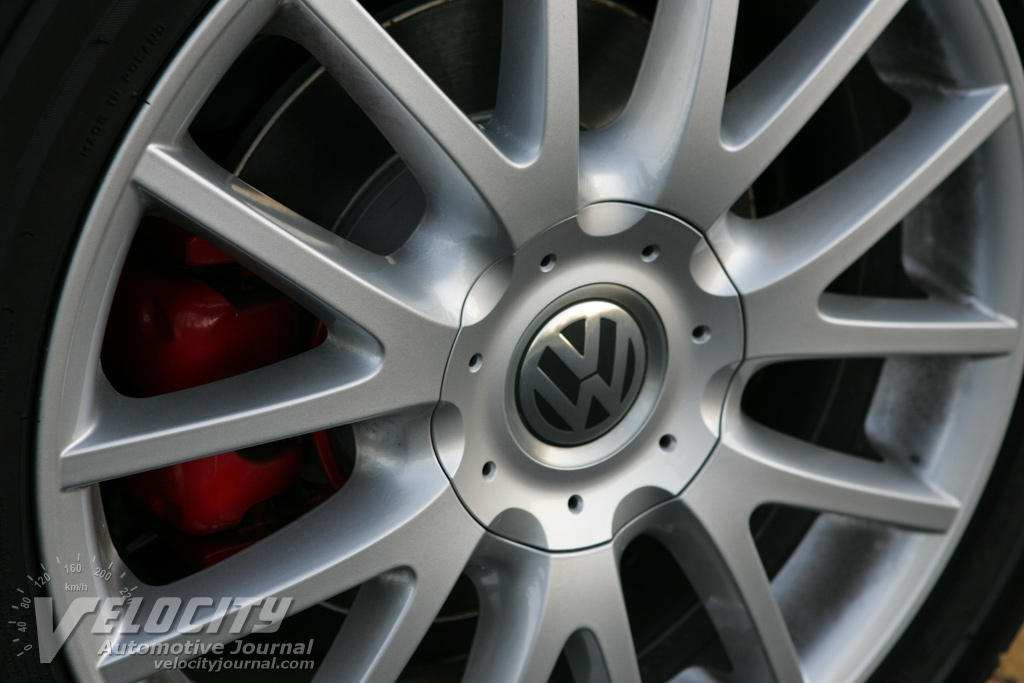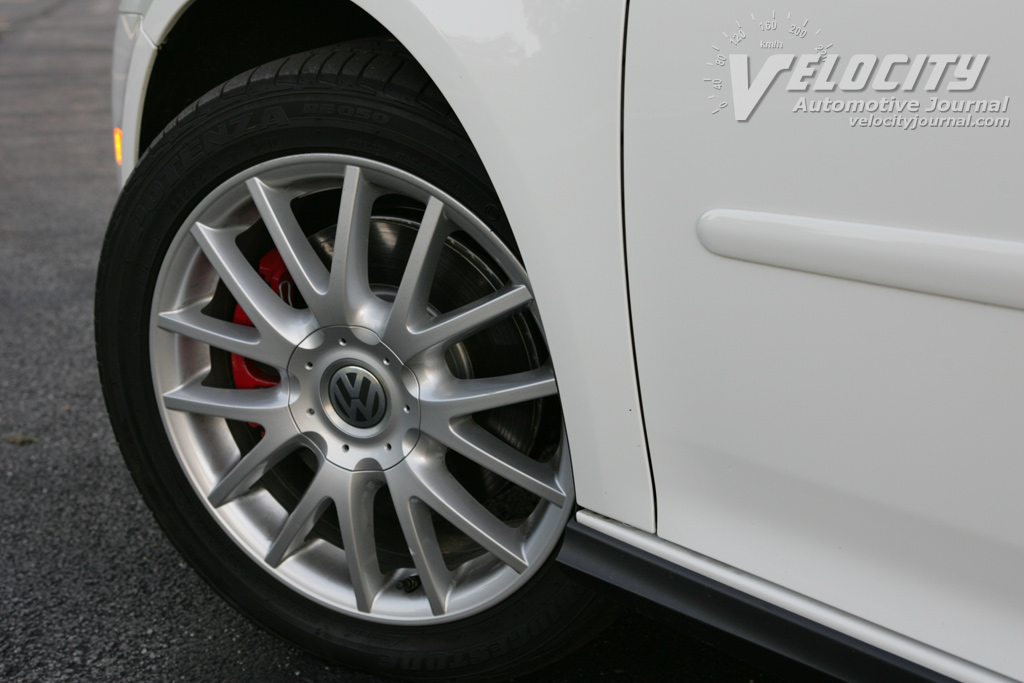Review: 2007 Volkswagen GTI 4-door
09/27/2006
Greg A. Godsell
The new GTI is easily the most significant new model to wear the name since the original. Although the 5th generation Golf became available in Europe in late 2003, US customers had to wait over 2 years to get their hands on the latest GTI. When the new 2-door GTI finally went on sale in 2006, it met with overwhelmingly positive reviews and enthusiasm. For 2007, Volkswagen has decided to import the 4-door GTI as well.
The GTI is the performance variant of the front-wheel-drive compact car sold as the Rabbit in the U.S, and as the Golf in other markets. Although it is largely a drivetrain upgrade to the Rabbit, Volkswagen has long marketed the GTI as a separate product line. With a base price of around $22k, the GTI is not inexpensive, nor is it cheap. Thankfully, the base model is well equipped, and the option list is short. The PG1 package includes the sunroof and satellite radio for $1,370. The PG2 package, which includes the PG1 package, adds leather seating, dual zone climate controls, and heated seats for $3,160. The only other major items on the list are a navigation system, wheel/tire upgrades, and an optional port-installed ground effects package. A fully loaded 4-door GTI would top out at about $32k. Four-door models run $500 more than the 2-door models.
The pricing of the 2-door GTI slots it just above the Honda Civic Si coupe and the Chevrolet Cobalt Supercharged SS, and on par with the Mitsubishi Eclipse GT and Mini Cooper S. The closest competitor to the 4-door GTI is the Mazda Mazdaspeed3. Hit the option sheet and GTI bumps up against the base price of its sibling, the Audi A3. The AWD Subaru Impreza WRX wagon is also an intriguing option in the same price range.
Although the exterior design is sleeker and more refined, the new GTI is immediately recognizable as a VW Golf (Rabbit). The Rabbit/GTI is the only 4-door hatchback on sale in the US with the traditional boxy profile. Most 4-door hatches have either a more steeply raked rear hatch, and/or windows in/behind the c-pillar, resulting in a more wagon-esque style. Volkswagen has done an excellent job of taking the standard hatchback body style and incorporating contemporary design themes.
Compared to the Rabbit, the GTI wears a distinctive front end. The grille, lower intake area, and insets for the fog lamps are all styled with a black honeycomb pattern. The area below the grille is black, in the single frame style found on other VW products like the Jetta, Passat, and all Audis. A contrasting thin red line that looks like seat piping underscores the grille. A large VW symbol dominates the center of the grille, flanked on the left by the letters "GTI". Xenon HID headlamps are standard equipment. A headlamp washer system with two small doors fits on the bumper underneath the headlamps.
In profile, only the aggressive alloy wheels and bright red brake calipers indicate that this is no mere Rabbit. A textured black valance provides protection from rock chips and road debris. The GTI's sleeper styling continues to the rear, where only the dark lower valance really sets this VW apart from the standard Rabbit. If you haven't seen a new Golf, be sure to check out the hatch release. The round hinged VW emblem pivots to release and lift the hatch.
A gas strut supports the hood, which is uncommon for compact cars. The engine compartment is large and well organized. One exterior design oddity is the windshield; which is flush with the roof and A-pillars at the top, but recessed at the bottom near the hood. The windshield edges are fitted with gaskets to protect and fill the resulting mismatched area.
Peer inside and you will find the single unmistakable design element that distinguishes the GTI. The base seat cloth upholstery on GTI models is a white, charcoal and red plaid. An all-black leather interior is offered, but is only packaged in the pricey PG2 package. Virtually everything else is charcoal colored, save for a band of aluminum-looking trim that spans the dash and door panels. GTI models also have alloy pedals and GTI-labeled trim pieces in each doorway.
The instrument panel and dash are finished with a combination of soft touch and upscale plastics, with the exception of the center stack. Despite the otherwise well executed interior. The center stack and control knob feel are sub-standard. This is significant because it is the one area of the interior that couldn't be mistaken for a more upscale automobile like an Audi. One other oddity is how the dash is not flush with the lower edge of the windshield. A 2-inch lip jumps from the top of the dashboard to the base of the windshield. The only conceivable purpose seems to be to block the line of sight from the driver's seat to the back of the hood.
The gauges are clear, legible and tastefully illuminated with blue backlighting. Contrasting red backlighting is used for secondary controls like the windows, audio and climate controls. The door locks glow in orange to indicate the lock status. There are merits to different lighting colors for the various elements on the dash, but the large 1.5 in. x 5.5 in. blue audio system readout, and the 2 in. x 3 in. red information center between the gauges disrupt a sensible scheme. The information system is more problematic, as the bright red display overpowers the softer blue on the gauges.
Steering wheel mounted knobs and buttons control the information center display between the gauges. It displays useful information like time, temperature, direction traveled, and mileage. Less useful is the large pictograph that shows if the doors, hood or hatch are open, which is mostly obvious from the driver's seat. Instead, the display should show whether the fuel door or gas cap is open. Numerous menu options and settings are available to customize convenience items like the interior lighting and mirrors. The information center even has a setting for winter tires.
There are numerous small storage spaces. The center console has a smallish compartment, while the door panels have deep hard-sided pockets that can accommodate a variety of items including a travel mug or bottle. An ample glove box can cool your drinks.
As one might expect of a German car, the front seats are firm, supportive, and well bolstered. There are manual controls for fore/aft and up/down adjustments. Knobs are used for lumbar support and seat back adjustment. Seat back adjustments knobs are inconvenient because it takes too long to make coarse setting changes. Front seat headroom is plentiful for tall drivers, even with the sunroof.
Rear seat passengers are not as fortunate. The back seats are flat, with minimal contouring for occupant comfort. Despite the GTI's box-like exterior profile, the downward slope of the roof and the sunroof mechanism reduce rear headroom significantly. There are three rear headrests, which are uncomfortable in the lowered position, and eliminate rear visibility when raised. On the plus side, rear seat passengers have dedicated vents at the back of the center console and a pair of bright map lights.
The benefit of the 4-door hatchback is its utility. Opening the top-hinged hatch reveals a large cargo area measuring roughly 29 in. x 40 in. x 17 in. The hard cargo cover attached to the hatch conceals the contents when the hatch is shut and provides about 12 in. x 40 in. of package shelf for rear seat occupants. The cargo area features a number of tie downs and even a 12-volt power point. The concealed hatch mechanism will keep you from snagging items or getting greasy while loading and unloading. There is more than enough cargo room for the vast majority of day-to-day errands. Once a common body configuration, many consumers have forgotten about the utility of the 4-door hatchback. It's always amusing to catch the curious glances from large SUV drivers while loading groceries or supplies. Yes, it all fits.
For more serious hauling, the rear seats are split 60/40 and contain a separate pass-through compartment. Ironically, given the overall flat design of the seat cushions, the rear seats do not lie flat when folded, stealing about 10% of cargo carrying volume. With the cover removed and both seats down, the complete cargo area stretches some 56 inches deep, allowing stowage of an item up to 31 in. x 40 in. x 40 in. This assumes that it clears the angled hatch opening, which is only about 29 inches tall.
The real reason to spend an additional $6,000-$10,000 for a GTI over the standard Rabbit is for the rewarding driving experience. Immediately obvious is the engine note. Stand by the hood, and the 2.0L turbo sounds like a normal four-cylinder powerplant. From the driver seat, the deep throaty burble from the tuned exhaust sounds like a much larger displacement engine. The turbocharged four has outstanding punch, which results in a car that is both powerful and quick. Torque steer is minimal with the ESP engaged. However, 207 lb.-ft. of torque is sufficient to cause continual battles with the ESP system during hard launches.
Driving controls are right on the mark. The outstanding steering wheel is small in diameter, but thick and chunky to grip. With a pronounced flat spot on the bottom, and bumps at the four corners, there are many places to grab on tight. The precise shifter is blessed with short throws ideally suited for aggressive driving. Clutch effort is light, and the GTI features a large dead pedal to rest your left foot between shifts. A firm pedal and strong brakes encourage the driver to cut through traffic with confidence. The only complaint is the slight accelerator lag due to the drive-by-wire throttle control.
VW tuned the GTI's ride to be firm, without being punishing. There is enough suspension compliance to allow the GTI to be comfortable for long distance cruising, yet not too much to detract from manic short blasts to the grocery store. A well-tuned suspension, great steering and sticky summer tires inspire confidence for quick maneuvers. Overall, the GTI is very well composed and stable, especially considering that this is a tall, boxy, short wheelbase hatchback.
We walk away from the GTI duly impressed. This competent car has a very solid, refined and upscale feel that justifies its relatively high price tag. While we can enthusiastically recommend the 2-door GTI, we are more skeptical of the 4-door variant's utility. For buyers already considering a GTI, the rear doors improve ingress/egress, but life in the rear seat isn't significantly better. Shoppers specifically looking for 4-door performance in the same price range will find a number of reasonable alternatives, which makes the 4-door GTI a tough sell in this competitive segment.

